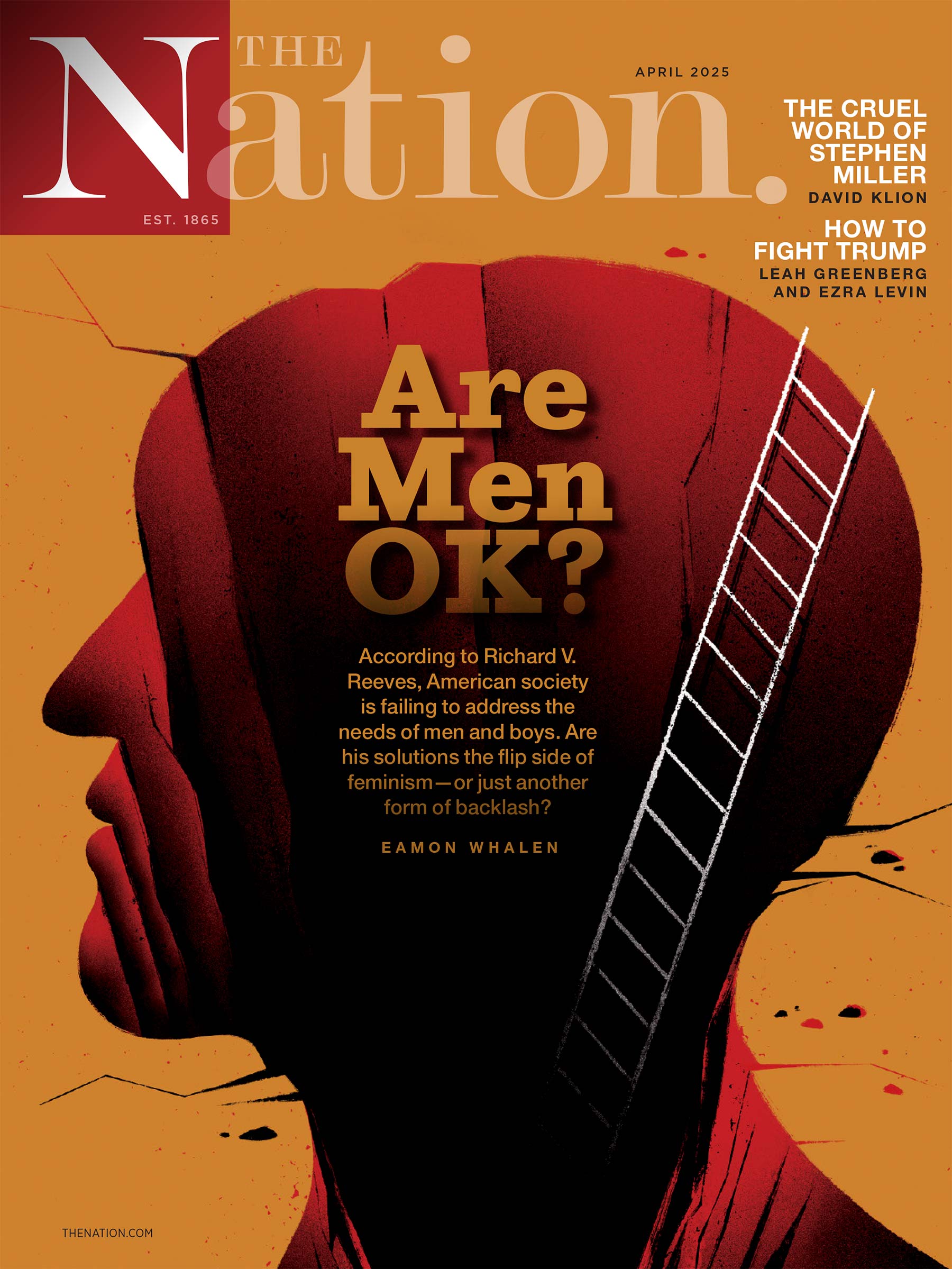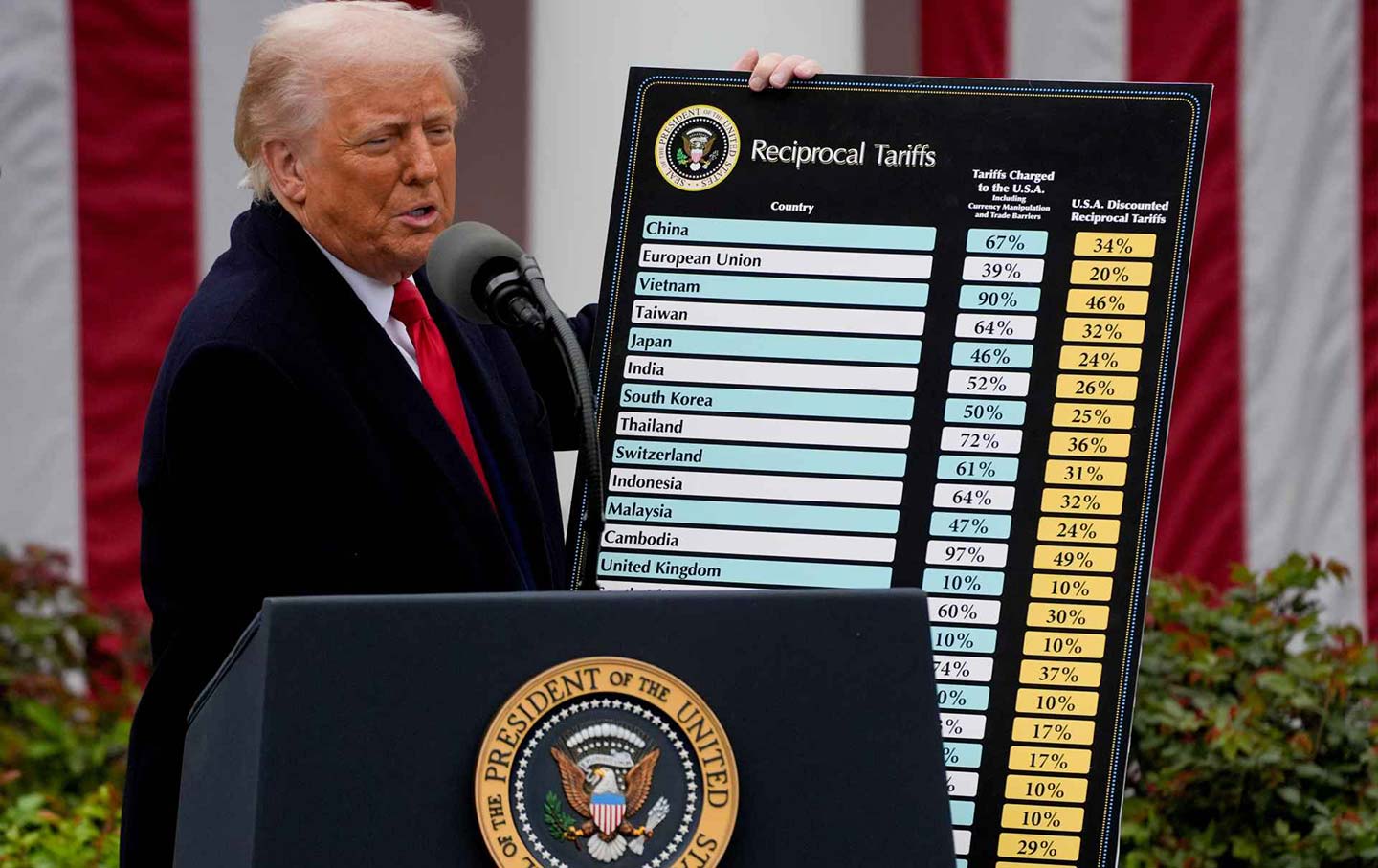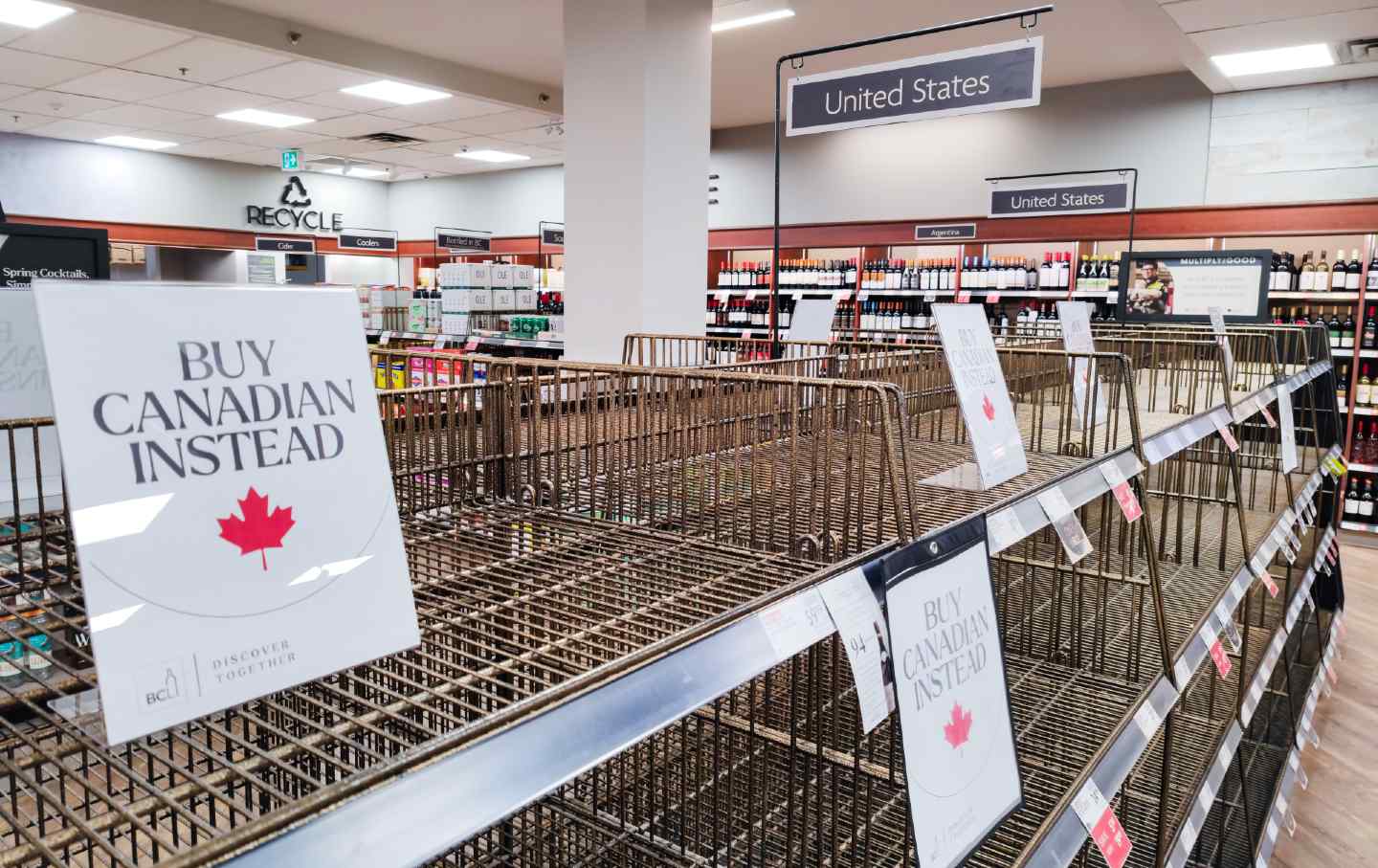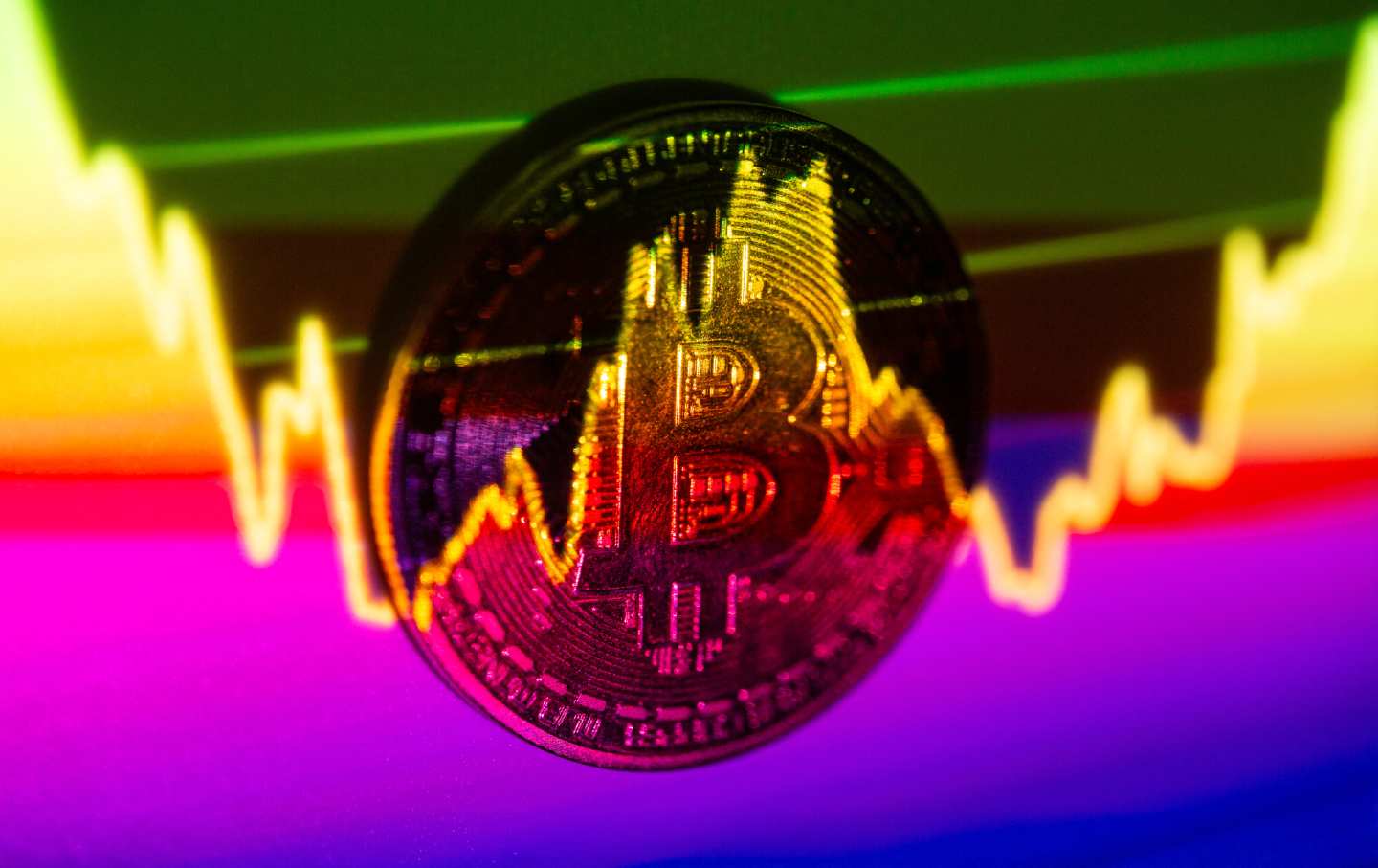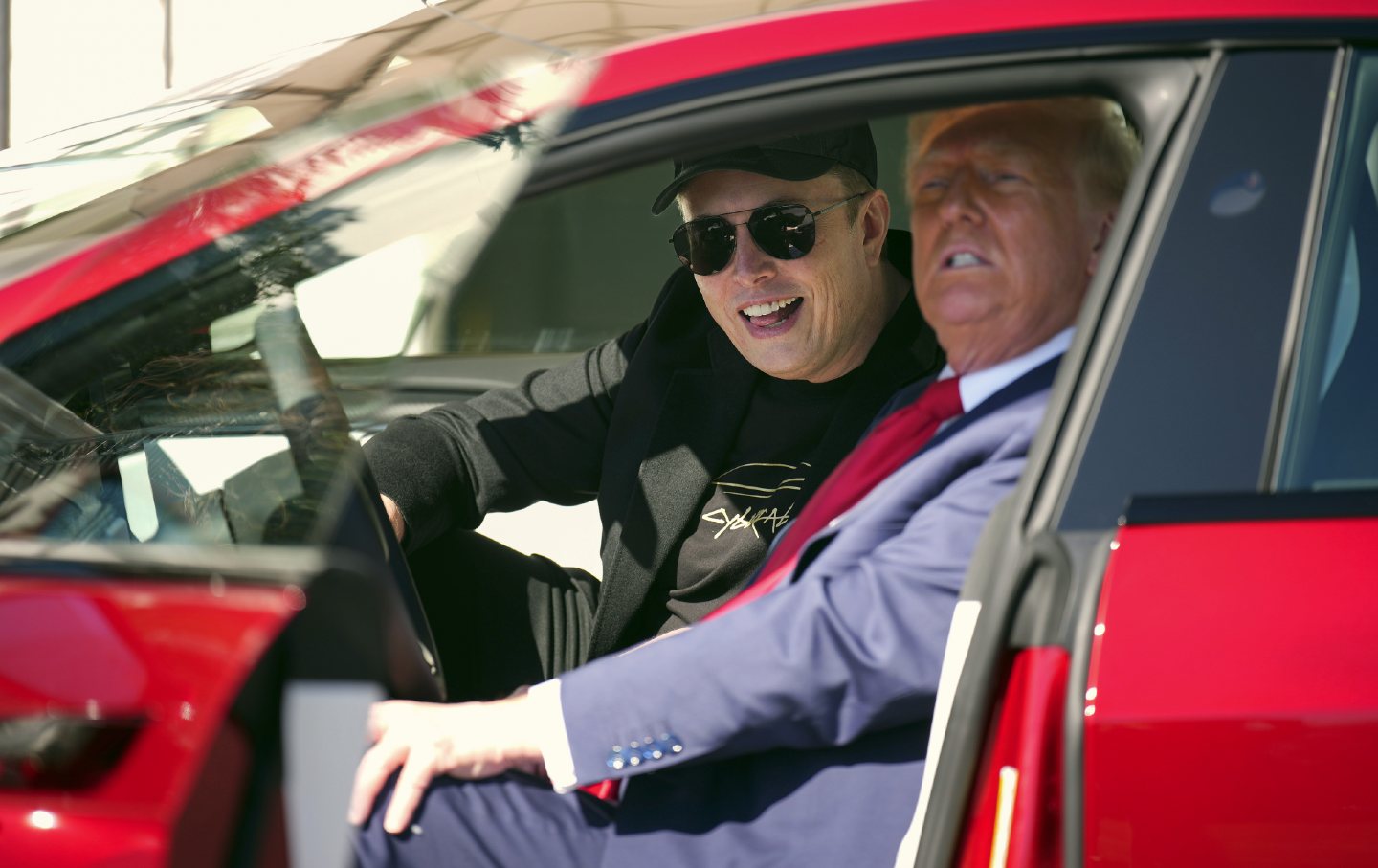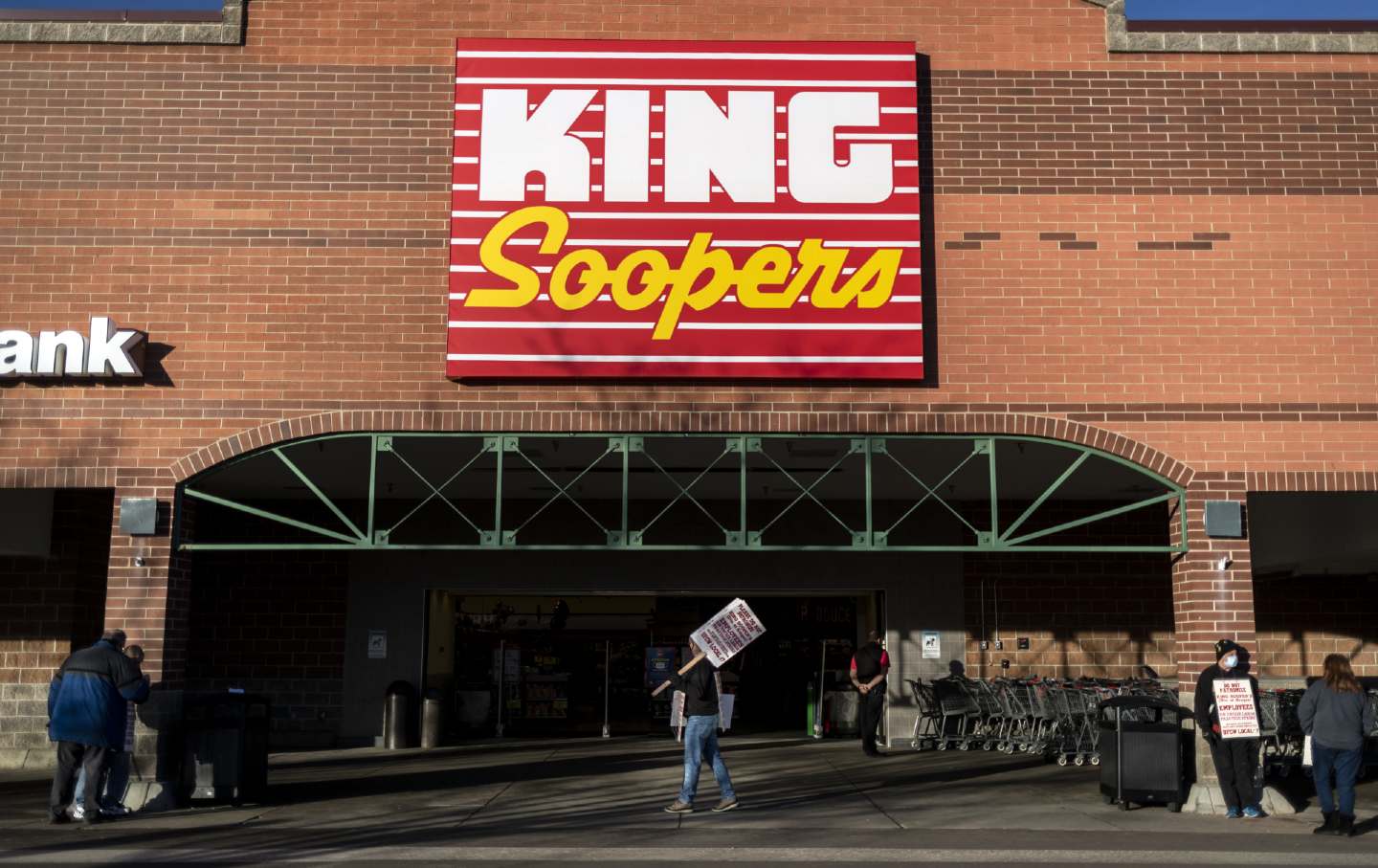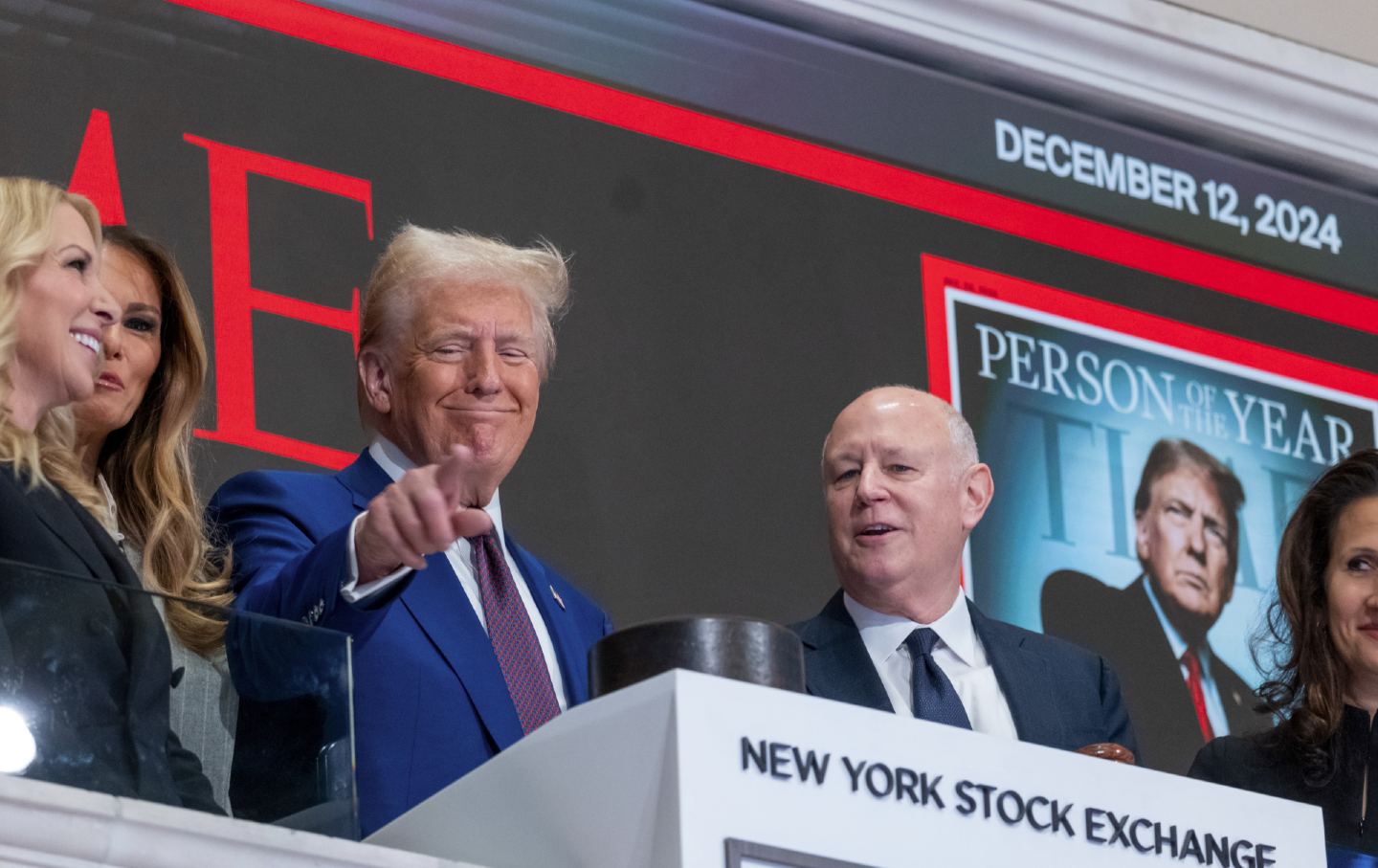Trump’s Delusional Tariff Policy Is Already Wreaking Havoc
The economy took an immediate hit after the president’s “Liberation Day ”announcement.
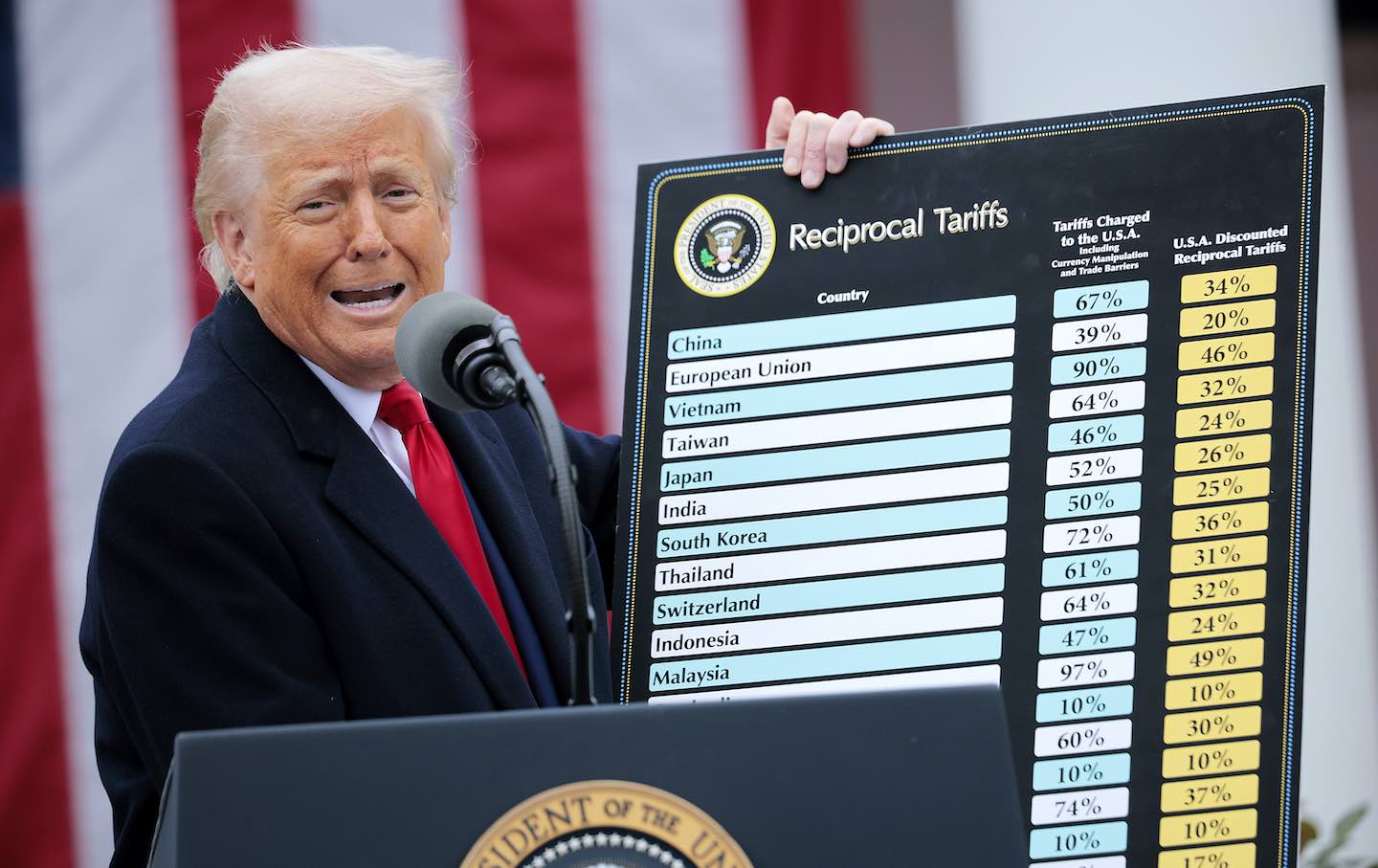
President Donald Trump holds up a chart during his “Make America Wealthy Again” trade announcement in the Rose Garden at the White House on April 2, 2025.
(Chip Somodevilla / Getty Images)Everything in the Trump governing playbook follows the broad dictates of reality-TV programming, and yesterday’s announcement of a historic lurch back into the hoary dictates of 19th-century protectionism was no exception. To begin with, there was the long promotional tease, wherein Trump endorsed aggressive new tax hikes on US imports at a succession of campaign rallies and events mostly by marveling at how great the word tariffs sounds. Then there was the branding push—the announcement of the Trump tariffs package wasn’t just another policy briefing; it was Liberation Day: a bold and sweeping vindication of long-traduced American economic liberties.
And as is the case with any Trump-aligned marketing campaign, the details were an afterthought. The day ahead of Trump’s big announcement, four federal agencies were still rushing to complete 25 research reports analyzing the likely impact of different trade scenarios—all while those economic arms of the administration are still breaking in new directors, thanks to the broader currents of chaos in the Trump White House. But this last-minute bid to assess just what an extensive new tariff regime might do to the US economy didn’t really matter to Trump in the first place. At times, the president has promised a punitive array of “reciprocal tariffs,” matching the trade barriers established by other nations on a strict one-to-one calculus, while at other times he’s said he’s going to move ahead with a more flexible model of selective trade restraint. From Trump’s own standpoint, the particulars of the new tariff program were of less moment than ensuring that the timing was right. After first scheduling the grand occasion on April 1, Trump then moved it ahead a day, explaining to reporters that he “didn’t want [it] to be April Fool’s Day because then nobody would believe what I said”—thereby marking the first time an American president conceded that a major policy initiative could be readily mistaken for a prank.
Nor was that the only scheduling adjustment; after global trading markets slumped badly in anticipation, the White House moved the formal launch of Liberation Day back an hour, so that it would occur after the markets closed Wednesday. (As it happened, Wall Street rebounded slightly in trading that day, though that appeared to have chiefly been in reaction to the news that the nihilist reign of Elon Musk as Trump’s idiot consigliere might be winding down.) But despite the administration’s best efforts to push market responses aside during the Liberation Day spectacle, the global futures markets promptly tanked in response to Trump’s announcement, shedding more than 3 percent in value—roughly $1.4 trillion—in just four minutes. The morning after, the Dow opened with a harrowing drop of 1,125 points, and the S&P Index fell by more than 3 percent. The price of gold surged to an all-time high of more than $3160 a troy ounce, and the price of 10-year Treasury bills dropped, as spooked investors rallied to safe havens in a moment of crisis.
Trump didn’t lay out his plan in all its detail, but he did say that a 10 percent tariff would serve as the “baseline” for all trade accords, and he backed off his earlier threats of fully reciprocal tariffs. “We will calculate the combined rate of all their tariffs,” he said of America’s trading partners at the Rose Garden ceremony for his executive order. “And because we’re being very kind, we will charge them approximately half of what they are and what they’ve been charging us. The tariff will not be fully reciprocal. It will be a discounted reciprocal tariff.” For good measure, he also announced a 25 percent tariff on all auto imports. None of this is remotely “kind,” or merited by a trade deficit that is in large part a benefit to most American consumers. It’s also, in key instances like China, a tariff imposed on top of existing tariffs—which is to say that the 34 percent tariff rate Trump wants for Chinese imports is in addition to the 20 percent rate he approved earlier this month, making for a total rate of 54 percent.
These changes are clearly far more sweeping than many market players were anticipating—and the resulting economic mayhem will likely be far worse, and longer lasting, than they were reckoning. The run-up to Trump’s announcement has already seen steep declines in trading on Wall Street; the first quarter of the year saw a 4.6 percent drop in the S&P index, representing more than $4 trillion in paper value. It also produced an historic peak in the Global Economic Policy Uncertainty Index—eclipsing the record formerly held by the onset of the Covid pandemic. It’s no small feat to outpace an event that shuttered nearly all basic economic operations in the United States, and sparked more than $14 trillion in losses to the American economy.
The case Trump made for his tariff package was an exercise in pure delusion. The Trump trade regime already looks to set a modern American record for punitive tariffs—largely because the team charged to track the tariffs that other countries impose on US exports worked from made-up data. Instead of presenting an actual roster of foreign tariffs to supply the baseline, they simply used US trade deficits with the trading partner in question and divided that figure by its exports to the United States. This rendered insane figures such as a 90 percent “tariff” on US imports to Vietnam, which mostly represents our trade deficit to a country that imports inexpensive finished goods to the United States. (US trade also accounts for about a third of Vietnam’s GDP, because we have sought to establish its economy as a regional counterweight to China—a standing that now all but ensures a steep and brutal downturn there under Trump’s senseless tariff plan.) The same bogus tariff reckonings apparently did not factor in exports of services in addition to goods—another huge oversight, since the United States is the largest exporter of services in the world, to the tune of more than $1 trillion. Finally, and most hilariously, the savants compiling this damning roster of foreign trade predation included cunning polities like the Heard and McDonald Islands—Australian possessions about 1,000 miles north of Antarctica that are completely uninhabited. That’s right: The zeal of MAGA tariff enforcement has transcended the bounds of mere humanity and now targets barren rock formations marooned in the sea. Indeed, comparisons with actual AI responses to prompts on tariff policy suggest that the work of setting the playing field for Trump’s tariff regime has fallen to the same corps of AI-addled dipshits who are masterminding the nihilist tour of DOGE through the federal bureaucracy. Again, it’s a breathtaking development: The nearly value-free export of AI is now apparently being deployed to level the existing export economy.
Another major problem with the new trade system is that, like many features of governance in the second Trump administration, it’s illegal. Congress is supposed to be the chief player in approving trade agreements, and it’s only by invoking an ill-designed model of trade restraint as an emergency executive power that the Trump White House has been able to concoct the pretext of an Oval Office Liberation Day in the first place. The underlying reasoning here is the same as the White House’s grotesque abuse of power to institute a new regime of mass deportation and torture of undocumented immigrants, and Trump went out of his way in his Liberation Day remarks to proclaim that “chronic trade deficits are no longer an economic problem—they are a national emergency that threatens our security.” Trump’s formal executive order invokes the same emergency powers to protect national security, without any empirical basis for doing so beyond a great deal of pre-scripted MAGA hand-waving.
Finally, transforming US trade policy into an executive plaything is a wildly costly proposition for the rest of us. Trump trade adviser and felon Pete Navarro has already estimated that the new tariff regime will produce $6 trillion in revenue over the next 10 years—incorrectly boasting that this figure is a tax cut, when it will actually raise the bottom line for import concerns, who will then pass costs directly on to consumers, in the hallowed economic practice known as price inflation. Navarro’s estimate, understood in terms of bald economic reality, represents the largest tax increase in American history.
In Trump’s Rose Garden reverie, the new tariffs will usher in a “golden age,” spurring both US and foreign business to reshore plants and production while creating vast new markets for such production abroad. If newly aggrieved American trading partners “complain,” then they should be brought swiftly to heel, he announced—“if you want your tariff to be zero, you build your product, you build your plant in America.” The precisely opposite scenario occurred in the wake of Trump’s first-term tariffs, when the US economy lost more than 200,000 manufacturing jobs—and the steeper tariffs now in play are far more likely to accelerate that trend than to reverse it. The president even provided a thumbnail protectionist account of recent economic history, in which the vastly unequal economy of the 1880s marked the high watermark of American prosperity. He then went on to explain that “in 1913, for reasons unknown to mankind, they established the income tax,” echoing the campaign come-ons from him and his Commerce Secretary Howard Lutnick that sweeping tariffs would one day abolish the income tax—a profoundly regressive and unequal model of generating revenue, as the Gilded Age made blindingly clear.
But Trump wasn’t done: In a lurch into unalloyed delusion, he pronounced that the Great Depression “would never have happened if they stayed with the tariffs.” The root causes of the Depression are still being debated, but precisely no serious student of the subject takes this view—for the simple reason that the Republican Smoot-Hawley tariffs took hold shortly after the 1929 crash, and strangled any prospect of a short-term recovery by fomenting a global trade war. Trump has introduced his battery of tariffs–which already look to outpace the stifling Smoot-Hawley strictures on trade—amid conditions of full employment, robust domestic investment in the manufacturing economy, high growth, and down-trending inflation. But by pointedly ignoring the folly of the Smoot-Hawley tariff regime, he may well be condemned to repeat it.
